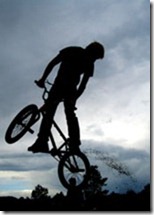 Welcome back for another episode of Tough Call with me, Viktory. Today I want to discuss roster evaluation, and specifically, two factors to look at when examining your depth charts.
Welcome back for another episode of Tough Call with me, Viktory. Today I want to discuss roster evaluation, and specifically, two factors to look at when examining your depth charts.
You do have a depth chart for your raid positions right?
… Please tell me you have a depth chart for your various raid roles and you’re not just bringing whoever shows up first …
(For anyone who doesn’t get the sport analogy, a depth chart basically lists each position and ranks the players have that position in order. You have your go-to guy/gal, the back-up, the back-back-up, etc.)
Editor’s Note: Before we go any further, if you are of the steadfast opinion that nobody deserves to be benched, or that your best friends deserve a spot in every raid, you will likely want to stop now.
Okay, so let’s say you’ve got your full raid roster in front of you and you’re trying to figure out who’s going to make the cut and get a stable spot in your 25-man raid. Obviously you have certain roles you need to fill (tanks, healers, melee, ranged) and certain skills you need players to possess in those roles (AoE heals, interrupts, soak tank, kiting, etc). You’ve got a lot of criteria to look at when deciding who is THE BEST player for you to bring to your raid.
(Remember, “take the player, not the class” implies “take the best possible player”.
One of the more common downfalls I’ve seen leaders suffer, and one of the worst traps I’ve seen players try to spring on their Raid Leader, is the substitution of Time for Talent/Aptitude.
A few weeks ago I told you that “preparation is king”, and while that still holds true, by now you should be seeing who actually knows what’s expected of them, and who’s just reading a script. In fact, if we think of raiding like a foreign language, we can come up with three archetypes.
Native Speakers
Some players have a lot of natural talent. These players are the mage who always does crazy DPS and makes it look easy, the guy who plays a utility spec and still manages to do competitive DPS, the healer who can instinctively spot issues with the raid and react in a clutch moment (see Matticus in his prime*). Everyone loves to have these guys around, especially when they don’t act entitled or get lazy because they think they’re too good to need to put in the grunt work.
*Note: I said “see”, not “listen to”. He’s a horrible story-teller.
Fluent Professionals
Other players have to work hard to produce the output you’re looking for. Think Rudy here, the guy with a lot of heart who does his homework and gives you the results you’re looking for. As a leader you know that he’s always reading up on the relevant websites, maybe talking to other progression raiders who play his spec, and is constantly seeking ways to improve. Through their effort, they are just as good, or nearly as good as your top tier guys. The key here is that you DO see them improving, carrying their load, and not causing wipes.
I think a “perfect raid” is filled with a solid mix of these two personalities. However, we need to minimize or weed-out the last group:
Tourists
The personality to absolutely avoid is the “trained noob”, to borrow a term from Pure Pwnage. These are players who bring sub-par skill, spend a lot of time logged on, but instead of learning and absorbing their class mechanics, they may have only learned the accepted boss strat. These are the guys at the cafe with their French-to-English dictionary out, trying to look-up each word the waiter just said, because they were not expecting that response.
Players like this will present a liability to your raid anytime things deviate from the norm. Get bad RNG on a boss, or timers that don’t line up with the abilities the boss is using, and you can bet that these players will be toast. Customize the Tankspot strat to meet the capabilities of your raid, and you just may find these guys out of position and thoroughly confused.
Don’t be fooled by people who have a lot of time and very little aptitude. It all comes down to who can get the job done.
It is up to you, as part of raid management, to spot the player who may have raid knowledge, but not raid awareness, and figure out a solution. Determining who’s a “fluent professional” and who’s just a “tourist” will help boost your raid output (and morale) immensely.
If it’s my call, I’d put that person as far back on my depth chart as possible, only bringing them when I must class-stack, or when other players are missing, and I’d definitely keep recruitment open until I found a good core that was made up all “native speakers” and “fluent professionals”.
Please leave any questions or suggestions for future topics neatly stacked in the comments below. Shoot, if you’re so inclined, leave details of your most epic knitting accomplishment, too. Those are always cool.

